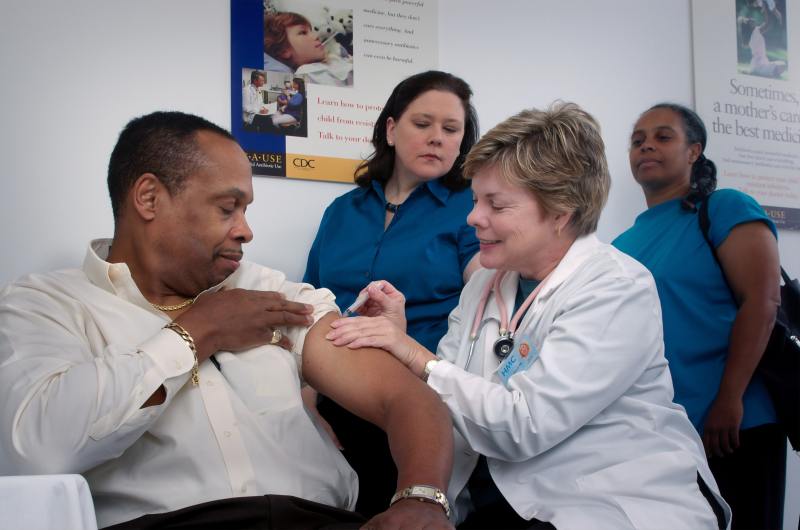Every other week, The Daily’s Science & Technology desk highlights exciting and influential research happening on campus or otherwise related to Stanford. Here’s our digest for the weeks of Jan. 17 — Jan. 29.
An accelerated timeline for distributing the COVID-19 vaccine nationally could get an additional 2.4 million people inoculated with the coronavirus vaccine, a Stanford Medicine study published on Jan. 4 in “Annals of Internal Medicine” found.
Since the vaccines from Pfizer-BioNTech and Moderna must be administered with two doses, the federal government initially decided to withhold 50% of the weekly available vaccine supply from states, intending to release vaccines three to four weeks later for the second dose. But the federal government changed its decision and has begun to release second doses to states to allow for more vaccinations.
According to medicine professor Joshua Salomon, using the government’s fixed-strategy approach may delay vaccinations for many people. His team modeled two different vaccine-distribution strategies, and found that a “flexible strategy” may boost the number of people vaccinated, and may lead to a decrease of COVID-19 cases.
The flexible strategy involves withholding only 10% of the supply during the first three weeks, then increasing to 90% during each of the next three weeks, and 50% thereafter.
“The flexible strategy gets more people vaccinated more quickly, which is important as we are still near peak levels of the winter surge,” Salomon wrote in an email to The Daily.
But there are still benefits to utilizing a fixed strategy, Salomon said.
“If there is a significant risk of supply collapse, the fixed strategy — which maintains large stockpiles to ensure second dose availability in three to four weeks — provides a very conservative hedge against this risk,” he said. A supply collapse could happen if the federal government is unable to provide vaccines to the states — but Salomon said, “vaccine manufacturers have indicated that they expect production to continue at a steady pace that will actually increase over the course of this year.”
When Salomon’s team modeled both strategies with a supply of 6 million doses available each week, they found that by the eighth week, 24 million people would receive at least one dose. Under both strategies, everyone would receive their second dose.
With the flexible strategy, Salomon’s team found that an additional 2.4 million people would receive two doses, because the flexible strategy “front-loaded” the vaccine supply during the first three weeks.
“The Biden administration has adopted a policy similar to the flexible one that we modeled, which is a departure from the strategy of the outgoing administration,” Salomon wrote.
Among Stanford Medicine faculty, thoughts vary on which strategy is best. John Ioannidis, professor of medicine, epidemiology and population health, favors the current approach, given the importance of getting two doses and not just one.
Gerald Grant, professor of pediatric neurosurgery, also said holding back doses is the better option based on the existing literature. He said he views this as an “issue of philosophy”: To him, it’s a choice between what the scientific community knows works — holding back doses — and taking the faster route that would likely work, but is less studied.
“Here we are doing what we know works,” he added. “Either approach is reasonable but here we are doing what has been well-studied in terms of providing protection.”
For other faculty, there are different aspects in a vaccination campaign that should be prioritized.
Associate professor of medicine Eran Bendavid suggested choosing a model based on prioritizing various criteria.
“In principle, the goal of a vaccination campaign should be to vaccinate as many people as possible as quickly as possible, with priority for those who are at greatest risk of severe disease,” Bendavid wrote in an email to The Daily. “If the constraint on this goal is truly the number of available doses, then liberalizing criteria and delaying dose #2 is preferred.”
Bendavid believes the issue lies with constraint in the logistics steps, not the dose availability. He said the focus on holding back doses distracts from the larger question of why getting doses to high-risk individuals has stalled: “Getting doses to older individuals and those residing in long-term care facilities (the highest risk groups) has been frustratingly slow, and not for lack of doses,” he wrote.
Although finding the vaccine can indicate a pandemic is beginning to end, vaccine distribution is equally important in ensuring everyone is inoculated against the coronavirus.
“The initial phase of the vaccine rollout highlights more generally how important it is to have federal coordination, strategic supply management and transparency,” Salomon wrote. “The goal should be to enable state and local providers to plan and execute vaccinations efficiently and equitably by having predictable supply matched to need.”
In other research roundup news…
- Stanford Medicine researchers are launching a wide-scale surveillance program to track coronavirus variants from the United Kingdom, South Africa and Brazil.
- A new modeling method to predict beach water quality may lead to fewer illnesses among beachgoers, and the process itself may have a faster turnaround time for receiving results — published in “Environmental Science & Technology” on Jan. 20, led by civil and environmental engineering professor Alexandria Boehm.
Contact Derek Chen at derekc8 ‘at’ stanford.edu and Iyshwary Warren at iwarren ‘at’ stanford.edu.
